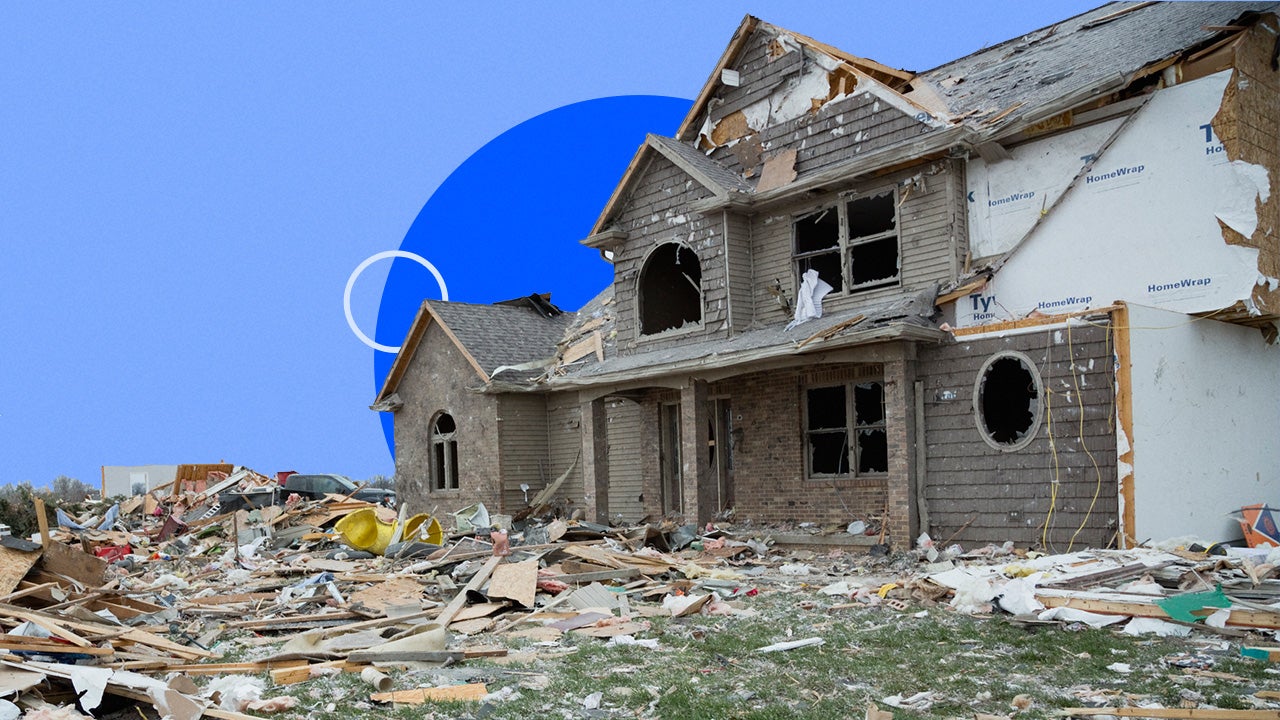Greg Vote/Getty Images: Illustration by Issiah Davis/Bankrate
Key takeaways
- Additional living expenses can cover the costs of living somewhere else while your home is being repaired after a covered loss.
- Loss of use coverage could pay for a hotel stay, storage fees, moving costs, pet boarding, laundry expenses or food costs.
- Most insurance policies include a pre-determined amount of additional living expense coverage, but you might be able to increase it.
Additional living expenses (ALE) are a core component of most standard homeowners insurance policies. This type of coverage is specifically intended to cover your living expenses if you are unable to remain in your home due to a covered peril. We explore and explain the intricacies of ALE, including what it does and doesn’t cover, how much you might need and when to file this type of claim.
What are additional living expenses?
Additional living expenses coverage is designed to cover costs that arise from being displaced from your home after an approved insurance claim for a covered loss. These policies can typically cover the excess costs of living incurred due to events like a fire or natural disaster. Your policy may also kick in if your home is in an uninhabitable state due to a loss of essential utilities, such as heat. Keep in mind that the policy will only cover additional expenses, not your typical expenses. For instance, if you’re staying in a hotel for a month, your homeowners insurance would cover your hotel bill but not your mortgage and light bill at your home.
Coverage limits and details under additional living expenses can vary by carrier. You can check with your insurance agent or read your homeowners policy to determine what coverage you have under loss of use. In addition to having a dollar limit, an ALE policy may also have a time limit for how long it will continue to pay your additional costs.
What is covered by additional living expenses?
Although coverage details for additional living expenses can vary by carrier, generally speaking, additional food, transportation and housing costs are typically covered as long as they are considered reasonable. If you submit a restaurant receipt from a five-star restaurant, your homeowners insurance company may not want to cover it. Your insurance company may want to look at credit card or bank receipts to make sure they understand your expenditures prior to your covered event.
Additional living expenses examples include:
- Food costs above what you routinely pay
- Laundry expenses
- Pet boarding
- Temporary rental accommodations
- Hotel stays
- Additional fuel costs
- Rental car and other transportation costs
- Storage fees
- Moving costs
What is not covered by additional living expenses coverage?
Additional living expenses coverage won’t cover the current costs you are already responsible for paying, such as childcare, insurance, mortgage, food and utilities. As a general rule, assume anything you routinely paid for before your qualifying event is not something you should submit a claim for. And, additional living expense coverage will only apply if the reason your residence is uninhabitable is because of a covered peril. Floods and earthquakes are typically not covered events because they require separate insurance.
Claimants should keep detailed records, including mileage and transaction receipts, to submit under the claim for reimbursement. If you don’t provide proof of your expenses, your claims may not be covered.
How much additional living expenses coverage should you have?
Typically, additional living expenses coverage defaults to a percentage, generally 20 to 30 percent, of your dwelling coverage, meaning that you do not need to choose your coverage amount. However, if you need to, you may be able to increase the amount of coverage or opt for a level called “actual loss sustained.” This means there is no set dollar amount on the coverage and the insurance company agrees to pay all reasonable expenses.
Some financial experts recommend purchasing as much additional living expenses coverage as you can afford since you can never predict what kind of disaster will befall you and how long you may be displaced. Other insurance professionals recommend that you keep track of the costs for hotels, rentals, restaurant meals and other likely expenses and calculate how much you might need for 30 to 60 days of displacement.
Learn more: Affordable home insurance companies
How to file an additional living expenses claim
Most insurers provide ALE relief on a reimbursement basis, so documenting your expenses is the most important thing you can do. Every company has its own specific process, but filing a claim will usually look something like this:
- Contact your insurance provider as soon as you experience a loss. Ask for a written list of what is covered under their additional living expenses coverage.
- Save every receipt for your hotel, food and other expenses while you are displaced. Maintaining them in chronological order may make the claims process faster.
- Include a notation describing each expense for your claims agent. This may help them verify whether an expense is covered and save a lot of time later on.
- Submit your receipts as directed by your insurance company. You may be able to provide them in person or online.
Once your claims are submitted, you will receive a check for approved ALE expenses.
Policy limits for ALE coverage
ALE coverage, like other coverages, has pre-defined limits. That means your home insurance policy will have a stated limit on the amount of living expenses your insurer will cover. Depending on your insurer, there may be endorsement options to adjust or remove the coverage limit in certain situations. Specifically, some insurers offer an endorsement called “actual loss sustained” that can remove the coverage limits on your ALE, provided the costs and claims are deemed reasonable.
Frequently asked questions
Why we ask for feedback
Your feedback helps us improve our content and services. It takes less than a minute to
complete.
Your responses are anonymous and will only be used for improving our website.
Help us improve our content
Read the full article here





